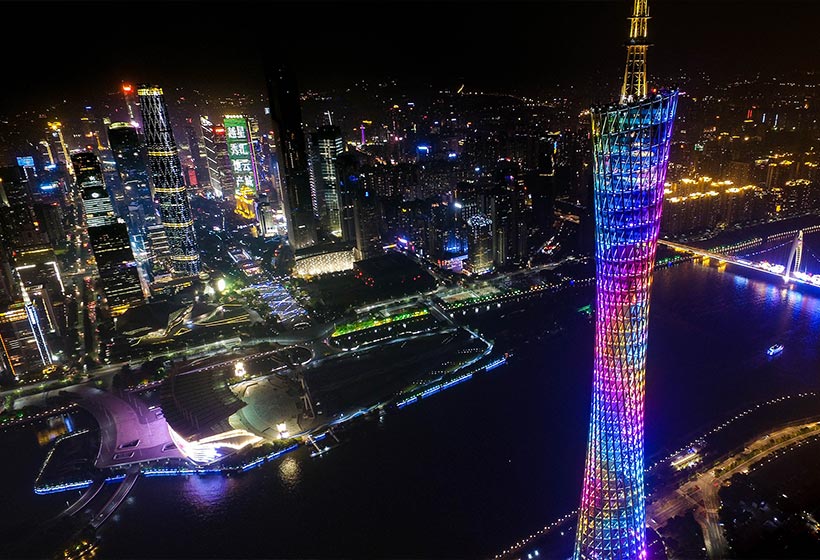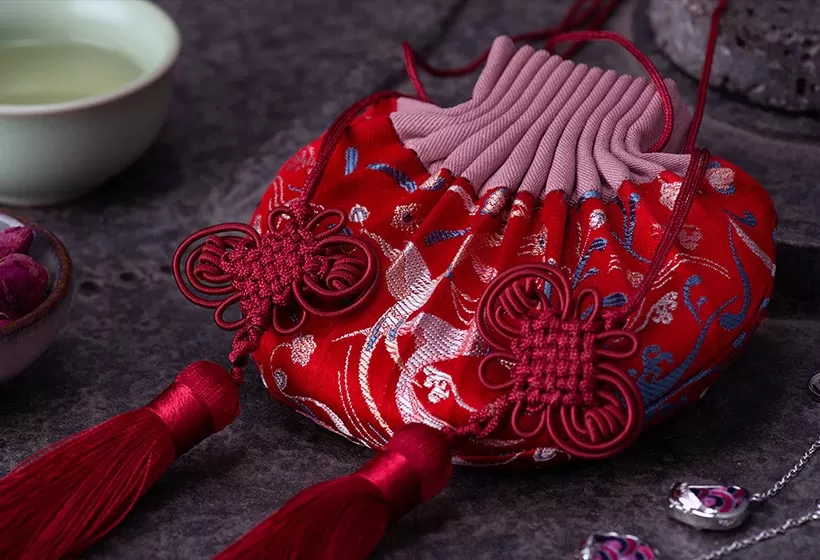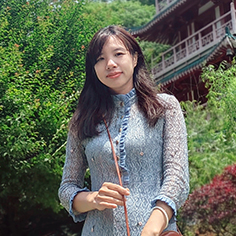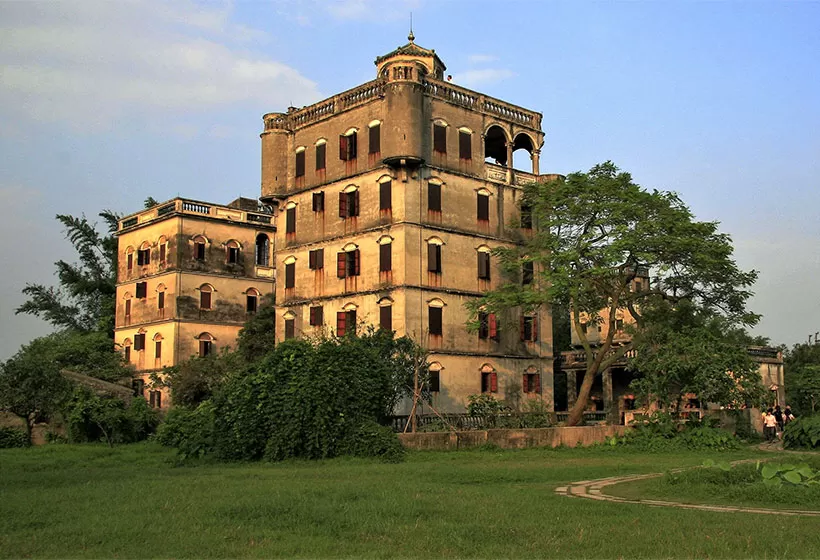Short Introduction to Guangzhou Local Culture: History, Nation, Diet, Clothing, etc
Guangzhou, is located in the southern part of China, along the lower reaches of the Pearl River, near the South China Sea. It is the third-largest mega-city in China, ranked only after Beijing and Shanghai. With a history spanning over 2,200 years, Guangzhou has been a cultural hub since the Qin Dynasty (221-207 BC), and is known as the "Southern Gateway of China." It has long been a major trading center and a key port along the Maritime Silk Road, playing a crucial role in global trade and the world economy for over two millennia. Surrounded by the winding Pearl River, this historic city boasts picturesque scenery. Guangzhou is not just a place name; it represents a rich cultural heritage, a long-standing historical tradition, and a unique lifestyle.
Brief History
Guangzhou also known as Yangcheng, Suicheng, and Huacheng. Legend has it that five immortals rode five goats, each with an ear of rice in its mouth, and flew to Guangzhou. They left the rice ears for the people of Guangzhou, wishing that the city would never suffer from famine. Afterward, they departed, and the five goats turned into stone, staying in Guangzhou forever. From then on, Guangzhou became a prosperous place and was named 'Yangcheng' (Goat City). The nickname "Flower City" and "Spring City" are related to Guangzhou's mild climate, which is akin to spring all year round, as well as its long history of flower cultivation.
During the Spring and Autumn and Warring States periods, the area was known as Nanyue.
In 214 BC, the Nanhai Commandery was established with Panyu as its capital, marking the beginning of Guangzhou's city-building history.
After Emperor Wu of the Han Dynasty conquered the Nanyue Kingdom, Guangzhou became one of the starting points of the Maritime Silk Road.
During the Sui and Tang Dynasties, Guangzhou was known as the Guangzhou Governor's Office and developed into an international trade metropolis.
From the Song Dynasty onwards, Guangzhou's foreign trade continued to thrive, becoming a center for the convergence of Chinese and Western cultures.
During the Ming and Qing Dynasties, Guangzhou was changed to Guangzhou Prefecture.
On October 14, 1949, Guangzhou was liberated and became a directly administered municipality under the central government.
On April 25, 1957, the first China Export Commodities Fair (Canton Fair) opened at the Sino-Soviet Friendship Building in Guangzhou. It marked a key point in China's economic opening-up to the world. Premier Zhou Enlai personally named the fair "Canton Fair."
Important Events and Influence of Guangzhou in History
After the Opium War, Guangzhou was forced to open as a trading port, becoming an important city for the exchange of Chinese and foreign cultures. Sun Yat-sen established the Military Government of the Republic of China in Guangzhou, playing a crucial role in the success of the Xinhai Revolution.
Following China’s reform and opening-up, Guangzhou actively responded to national policies and vigorously developed its economy, becoming one of the country’s major commercial cities.
Ethnic Culture
The Cantonese ethnic group, also known as the Yue ethnic group, Nanyue people, Cantonese, Guangdong people, or Lingnan people, is a group that speaks Cantonese as their native language. They are widely distributed across Guangdong, Guangxi, Hainan, Hong Kong, Macau, as well as in some overseas countries and regions. Unlike the Hakka and Min ethnic groups, which migrated from other regions, the Yue people originated from the Lingnan area, and they make up nearly 60% of the population in Guangdong Province. Guangzhou and Foshan are regarded as the birthplace of "Cantonese culture." This cultural heritage has deeply influenced the development of the region's language, customs, and lifestyle, making it a key feature of southern China's identity.
Lingnan Architecture
The Lingnan climate is hot and rainy, with frequent storms, making ventilation and shade common requirements for Lingnan architecture. One key feature is that these buildings are designed based on natural conditions (including geographic and climatic factors), focusing on functions such as moisture prevention, sun protection, fire resistance, and good ventilation. Early residential architecture in Guangzhou was significantly influenced by the building styles of Jiangnan. The bureaucratic and landlord classes often lived together for multiple generations in enclosed architectural complexes.
Initially, wall materials included rammed earth, pebbles, oyster shells, and bricks. After the Qing Dynasty, blue bricks, stone pillars, and stone slabs were commonly used, and exterior walls were often decorated with patterns of flowers, birds, and human figures. Examples of buildings made with oyster shell walls can be found in the Huangpu Ancient Port and Xiaozhou Village in Haizhu District, Guangzhou, as well as in the ancient villages of Panyu District, Guangzhou, and Shunde in Foshan.
Clothes style
The clothing of the Cantonese people is made from a variety of materials, including cotton, linen, banana fiber, bamboo, ramie, and silk. To suit the hot and humid climate, fabrics are typically light and breathable. Since the Qing Dynasty, women have commonly worn cheongsams, long robes, as well as capes, skirts, and pants designed to shield from the sun, wind, and cold. The large-collared shirts are often decorated with borders and intricate craftsmanship, with Cantonese embroidery as the primary decoration. Men traditionally wore long robes, mandarin jackets, front-opening shirts, and pants, in colors like indigo and dark blue.
Over time, the clothing style of the Cantonese people has evolved with the changing times, becoming more Sinicized and Westernized, but this does not signify a loss of cultural identity. With the development of the economy, many local Cantonese fashion brands have emerged, such as HEA, which incorporates traditional elements like the lively lion dance motif and Cantonese embroidery into modern designs.
Ethnic Language
Guangzhou dialect, also known as "Cantonese" or "Guangfu Hua," is one of the major dialects in southern China. It differs significantly from Mandarin and other Chinese dialects, with distinct phonetic characteristics. While Mandarin has four tones, Cantonese has nine, which makes it a more tonal language with rich variations in its pronunciation. Due to its wide range of tones and variations, Cantonese is often considered melodious and pleasant to the ear.
Festival of Ethnic
The folk activities in the Cantonese (Guangfu) region are diverse and vibrant, such as visiting flower markets and performing lion dances during the Spring Festival, dragon boat races during the Dragon Boat Festival, and moon-gazing during the Mid-Autumn Festival. These traditional celebrations not only enhance the festive atmosphere but also preserve and pass down the region’s rich cultural heritage.
The Dragon Boat Festival(The fifth day of the fifth lunar month):also known as "Chebei Village Dragon Boat Racing," is a traditional folk event in Tianhe District, Guangzhou, Guangdong Province. It is recognized as a provincial-level intangible cultural heritage of Guangdong. This celebration preserves the traditional dragon boat customs of the Lingnan region, which includes activities such as launching the dragon boat, picking herbs, dragon boat races, dragon boat displays, dragon hiding, and dragon releasing. Additionally, there are various folk activities like dragon boat rice, dragon boat cakes, and dragon boat plays, making the event lively and festive.
The Spring Festival Flower Market(January-February):is a unique cultural event in Guangzhou. Known as the "Flower City," Guangzhou’s annual flower market attracts worldwide attention. On the eve of the Chinese New Year, the streets and alleys of Guangzhou are filled with fresh flowers and potted plants, and many parks host Spring Flower Exhibitions. Large flower markets are often adorned with archways and floral displays, with florists flocking in to sell flowers and kumquat trees. The markets are vibrant and bustling, with crowds of people, and the festivities continue until the early hours of the first day of the New Year. This is the distinctive Spring Festival Flower Market of Guangdong.
Lion dance: The lion dance is a traditional dance performed during Chinese New Year and other special occasions. Join a class to learn the moves and try on a lion dance costume.
Lantern Festival (The fifteenth day of the first lunar month): During the Chinese Lantern Festival, Litchi Bay Scenic Area will arrange exquisite lanterns for people to enjoy, and also hold lantern riddle guessing, river lanterns, rice dumplings, Xiguan wedding performances and other exciting Lantern Festival programs.
Diet Style and Culinary Tastes
Guangzhou, the birthplace of Cantonese cuisine, is renowned for its exquisite culinary skills, delicate flavors, and emphasis on high-quality ingredients. Cantonese cuisine is famous for its mastery in cooking techniques, offering dishes that are light yet flavorful. Guangzhou’s food culture reflects the local people’s extreme pursuit of taste and quality.
One of the city's most iconic traditions is its morning tea culture, where locals savor a cup of fragrant tea paired with a variety of delicate dim sum (shrimp dumplings (har gow), rice rolls (cheung fun), char siu buns,) in the soft morning light. This ritual is an essential part of daily life in Guangzhou. It is time for family and friends together chat, relax, and share delicious food, Morning tea reflects the perfect harmony of Guangzhou cuisine and culture. It is not about eating but also savoring a warm and welcoming atmosphere.
The city offers an array of signature dishes such as roasted goose, white-cut chicken, honey-glazed char siu (barbecued pork), shrimp dumplings (har gow), rice rolls (cheung fun), char siu buns, and various desserts. Whether at time-honored restaurants like Tao Tao Ju or Dim Dou Dek, or tucked away in family-run eateries in alleyways, you will find unforgettable flavors that showcase the depth of Guangzhou’s culinary legacy.
Guangzhou’s food scene is not only a delight for the taste buds but also a celebration of culture and the art of living.
Read More Food-Restaurants in Guangzhou »
Cultural Heritage
Guangzhou’s intangible cultural heritage is rich and diverse, encompassing Cantonese cuisine, Cantonese opera, Canton embroidery, and Cantonese porcelain, among others. These traditional art forms are not only an integral part of Guangzhou’s culture but also treasures in the vast heritage of Chinese civilization.
In addition to its cultural arts, Guangzhou is home to numerous historical sites, including the 2,000-year-old tomb of the Nanyue King from the Western Han Dynasty, the 1,700-year-old Guangxiao Temple, the 1,400-year-old Liurong Temple, the 600-year-old Zhenhai Tower, the exotic Shamian Island with its 19th-century colonial architecture, the century-old Chen Clan Ancestral Hall, and the Sun Yat-sen Memorial Hall.
Customize Your Unique Guangzhou Tour
If you are interested in one of the Guangzhou itineraries mentioned above, please contact us, and we will be happy to customize it and provide a quote tailored to your preferences.
Alternatively, if you would like to customize your Guangzhou Tour, please visit our Guangzhou Tour Customized Center. We assure you that you will receive a reply within 24 working hours.
Informative Articles for Your Guangzhou Trip
 Canton Tower
Canton Tower- Travel Guide: attractions, seasons, hotels, food, itineraries, etc.
- Top destinations: places to visit in Guangzhou
- Travel itineraries: best itineraries for your reference
- Weather: the best time and seasons to visit Guangzhou
- Top attractions:well-selected top attractions in Guangzhou
- Cultural immersions: hands-on activities to spotlight your trip
- Unique perspective: top different things to do
- Guangzhou Culture: rich and unique
- Local food: what to eat while traveling in Guangzhou
- Luxury hotels: where to stay in Guangzhou
- Guangzhou Tours: tailor-made Guangzhou Tours for your reference
GREAT FAMILY CHINA TOUR
JULY 2024 We wanted to thank Grace at China Culture tour for organizing a great tour of China. We enjoyed our Beijing - Xian-Chengdu -Guilin -Yangshuo - Shanghai trip. Our local guides Bruce in Beijing, Susan in Xian, Jane in Chengdu, Mike in Guilin and Mary in Shanghai took care of us…read more details »
Teng Han L from SINGAPORE
Ready to Create a Unique Dream Travel?


